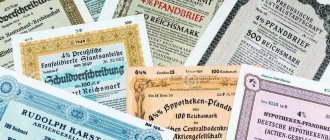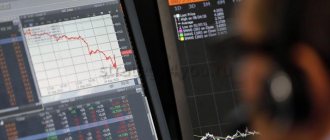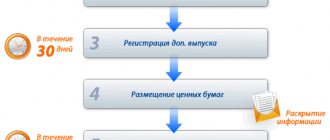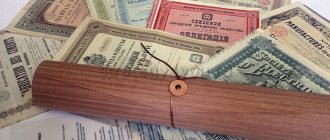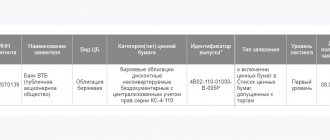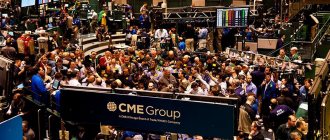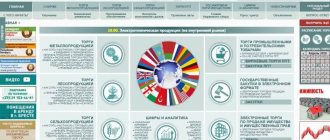A market maker (eng. market maker - market creator) is a professional market participant acting in the interests of the exchange. Its functions are to regulate prices and maintain a balance between supply and demand.
Today we’ll talk about the nuances of the work of market makers on the stock exchange: what they are needed for, how they earn money, and what techniques they use to maintain asset liquidity. We will also analyze their differences from brokers and give examples of market makers in the stock and foreign exchange markets.
Who is a market maker
This is a legal entity or individual who has entered into an agreement with the trading platform to maintain the liquidity of assets by making transactions in the right direction. In simple words, a market maker on an exchange is one who helps satisfy the maximum number of orders for sale and purchase and ensures a balance between supply and demand by regulating the volume of transactions.
To make it more clear, imagine this situation. You have a certain number of shares of a company, and there is a need to urgently sell them - no matter what the reason. Perhaps you urgently needed money or a specialist you know told you about an upcoming price drop. Or maybe you just decided to rebalance your portfolio.
So, you submit an application, but there are no people willing to buy the papers in such quantity. Thus, your transaction is postponed indefinitely until a buyer appears who is satisfied with both the price and the number of shares offered for sale. And while you wait, prices may start to fall, and you will miss out on a profitable opportunity. This is why market makers exist - they will buy securities from you as soon as you submit an order.
And vice versa, if you intend to purchase assets in a certain quantity, but none of the traders offers so many securities, you can do this instantly through a market maker.
We can say that market makers are intermediaries between the trader and the exchange, performing two main functions:
- maintaining the spread at the level established by the exchange;
- execution of orders from small traders.
Banks, brokerage companies, investment funds and large private investors act as market makers.
Market Maker Traps
Traps are price movements that are made at various points during the week, throughout the day and throughout the session by market makers to trap traders in a sell position or trap traders in a buy position.
These traps encourage you to take a position, and as soon as you take it, it goes against you.
They usually occur early in the week, so usually open from Sunday evening to Monday to create either a high or low for the week.
They can happen at the beginning of the day, they can happen at the beginning of a session, at the end of a session, at the beginning and end of the day, and at the beginning and end of the week.
Market makers set traps at the end of the day almost every day.
You will see the price pull back around 8 pm as they try to push the price back into the mid range.
Traps designed to encourage you to take the wrong position.
Trap movements at the end of the week encourage traders to enter trades over the weekend.
Market makers want to keep you locked in over the weekend. This gives them the opportunity to disrupt the market.
They are conducting a cost analysis ahead of the opening of the Asian session on Monday morning.
They look at all the different stops, they look at all the different positions, and if they can make a gap between the market and open positions and close positions at the worst possible time for traders (and take your money), they will do it.
It's like a license to steal.
Story
Market makers appeared simultaneously with exchanges. There have always been large players regulating prices and volumes of transactions. The term itself appeared in the 80s of the last century. Back then, transactions were made through telephone calls, but now all transactions are carried out instantly - through the trading platform.
An example is the Central Bank, which regulates the exchange rate of the ruble against the dollar. By buying foreign currency, the Central Bank stimulates demand and an increase in the value of the dollar. A decrease in dollar reserves, on the contrary, strengthens the ruble.
Short breaks in the operation of trading platforms ensure that the price gap remains minimal and the optimal number of orders within the exchange order book is maintained.
Principle of operation
Although market makers are intermediaries on the exchange, the transactions they perform are not always profitable for them. The thing is that they take part in trades all the time, and not just when there is a favorable exchange rate. As I already mentioned, the main goal is to ensure liquidity of instruments, and not speculation.
What assets are liquid? Those that sell and buy well. The main task of the market maker is to ensure a sufficient number of transactions within the price range established by the exchange.
About us: Admiral Markets
This material does not contain, and should not be construed as containing, investment advice, recommendations or an offer or solicitation for any transactions in financial instruments. Please note that such trading analysis is not a reliable indicator for any current or future trading as circumstances may change over time. Before making any investment decisions, you should seek the advice of independent financial experts to ensure you understand the risks.
Why do you need a market maker?
If there were no intermediaries on the exchange, the average trader would face the following problems:
- a long wait for a suitable counterparty for a transaction and the order hanging inside the order book;
- unreasonably inflated prices for popular instruments;
- losses from sharp price fluctuations.
In simple words, the market maker selects offers that are most profitable for both parties in terms of volume and price, and allows the transaction to be completed in a short time.
How do market makers make money?
There are different opinions on the topic of earnings of the “gray cardinals” of the market. The official version, which few believe, is that the market maker trades for a fee from the exchange. There are also bonuses from issuers, for example.
Indeed, it makes no sense for market makers to risk their reputation for the so-called “counteraction to the market” that they are often accused of. Imagine the situation: oil prices are falling, investors are getting rid of shares of oil companies in a panic. How long will it take to counteract such chaos if it is politically motivated? And, most importantly, is it worth taking such a risk by buying these shares?
By the way, about risks. Of course, large players hedge their risks because they carry out a large number of trading operations. For example, when purchasing a batch of futures contracts, the market maker usually enters into an opposite transaction that involves short positions.
But, in addition to the fixed remuneration from the exchange, there are other sources of profit:
- compensation for the risks of asset ownership;
- earnings on speculation and spreads (this applies to a greater extent to market makers working on currency exchanges, where the chance of concluding a reverse transaction is higher than in the securities market);
- remuneration from issuers (for example, during the initial placement of securities).
There are many materials on the Internet containing information about how a market maker works on the stock exchange, but only part of this information can be considered true. It all depends on the volume of transactions, the type of assets and the level of exposure to the market. Market makers are divided into two categories:
- institutional – regulating demand, supply and volumes of trading operations in accordance with the conditions of the exchange;
- speculative - large players influencing quotes by making large transactions.
Wyckoff algorithm
The market maker cycle described above is partly based on experience trading the market, and partly on the interpretation and adaptation of the Wyckoff trading algorithm.
The Wyckoff trading algorithm is based on price action algorithmology.
You can use the Market Maker/Price Cycle Wyckoff to recognize upcoming price movements.
Discovering the Wyckoff price cycle was a defining moment in our trading.
This applies to all markets equally.
How to understand that there is a market maker in front of you
It is not always possible to recognize the “gray eminence”. The reason is that for liquid positions, market makers often enter the market gradually, breaking a large position into several small ones. At the same time, they manage to increase volume during price rollbacks. This is a win-win technique and is used often.
But it also happens that the market maker is quite easy to see:
As you can see, large buy and sell positions are opened in pairs. The market maker's responsibilities include performing transactions with any type of asset, not just the most liquid. In other words, he must buy and sell, even if no one wants to do so.
The list of market makers can be viewed on the MICEX website; it is publicly available. Well, to become a market maker yourself, you need to be a professional market participant or a major investor.
When to trade
If the Forex market advertisement is to be believed, the Forex market trades 24 hours a day and you can make the jump at any time.
Liquidity is available at any time and you can trade whatever you want, whenever you want.
This is not entirely true.
Although you can place an order at any time, there are times when there is little to no liquidity, and in particular times when market makers are inactive.
We call periods of inactivity by market makers “hiatus times.”
You want to trade with market makers and therefore you need to know when they are active and when they are inactive.
So what are the trading hours and where are the time periods?
Typically the Asian session lasts from 23:00 to 7:00 GMT.
This is where the initial accumulation phase occurs, as well as the period when market makers set the initial high and low.
The London session runs from 7.00 to 15.00 GMT. This is the period when you will see the hunt stop and the trend moving.
Typically the New York session starts from 12:00 to 20:00 GMT and this is where you will see a reversal and consolidation later in the day.
Closing session from 21 to 22 GMT.
Typically referred to (in New York terms) as an end-of-day session, it is effectively break time.
Prices do not change much during this period. The market is virtually closed, and there is practically no liquidity.
Breaks
From the above, you will notice that there are gaps of time between sessions.
The interval between the Asian session and the London session is from 7 to 8:00.
There is little price movement during this period as market makers in the Asian and London sessions talk to each other.
They discuss what needs to happen in the London session for the price to be where they want it to be.
The same thing happened between the London and New York sessions.
Between 12:00 and 1:00 pm, market traders from both sessions discuss what is going to happen during the New York session.
The period from 20:00 to 22:00, although not strictly a break time, is a period of limited market maker activity.
In particular, this is the period when market makers in New York are having lunch.
As part of your trading strategy, you need to consider what is open and, just as importantly, which currency pairs are most likely to move during your trade.
How market makers manipulate the market: basic techniques
There are several traps that invisible players set for newbies. Most traders, even experienced ones, pay attention to those areas of the chart where the greatest activity is observed. What dangers might these areas pose?
This was discussed a little in the articles about stop loss and take profit. Let's remember about the “moose hunt”.
Collection of pending orders and stops
For example, a trader receives a signal about a breakout of the price level. This usually happens in an area where there is a congestion of a large number of stops and pending orders. Thus, the market maker makes a large trade, and the trader receives a loss.
The price is specially brought to the extreme level, immediately beyond which orders are placed. Let me remind you that market makers see all stops and turn liquidity in their favor.
Fraudulent trend reversal
This point follows from the previous one. By turning the market in the opposite direction using a signal about a false breakout of the level, the market maker manages to open or close the position he needs at a favorable price. The market then returns to normal. This happens quite quickly. Considering that most traders do not have time to constantly monitor charts, this strategy works great.
If the breakout is reached, you should wait for the price minimum or maximum to update - this will reduce the chances of falling into a trap and making a loss.
False breakouts due to news releases
This type of manipulation is aimed at the consciousness of the masses. I will give an example with the same oil. Against the backdrop of political news, the price of Brent futures fell, and the market maker begins to buy securities, which will rise in price again tomorrow.
When various negative news comes out, the wisest thing to do is not do anything. Do not give in to panic and manipulation by experienced players. The same technique is used here - a false breakout of the level and price reversal, which large players use to make a profit.
Market Maker Market Cycle
The market maker business model consists of several key phases.
So what does a typical week look like?
The week begins with the first trap move (see "Beware of Market Maker Traps" below) on Sunday evening or early Monday morning.
This is followed by an accumulation phase and the setting of an initial high and an initial low.
You will see this phase in the Asian session and you will see the price holding in a tight range of 25-30 pips.
The accumulation phase is then often followed by a hunt for a spring or stop, which is contrary to the real intentions of the market makers.
Market makers then initiate the actual planned market movement , which results in a trend that can be slow and steady or fast and furious.
A trend can last just a few hours, or it can last for 8 or 10 hours.
On a chart, a trend will be seen as a series of movements or pushes in the direction in which the market makers want the price to move.
Towards the end of the day or at the end of the session, a corrective pattern of some type (wedge/pennant/head and shoulders/M or W shape) will appear and the price will pull back from the high or low.
This is the markdown stage .
Price will attempt to return to the mean range and enter a slow, choppy consolidation phase.
Market makers repeat this induce-trap-shift process.
When looking at a weekly chart, a trend created by market makers as part of a cycle can last 3/4/5 days before reversing.
Market makers mix
The reversal or markdown phase does not always occur at the same time or on the same day.
Market makers confuse everything.
They don't want you to know the exact day the price will pull back from the lows or the highs before they then push the price back into consolidation and close out the week.
When looking for trading opportunities, you need to determine where price is in the market maker cycle at any given time.
Knowing this gives you the ability to determine what the next move will be.
What is the difference between a market maker and a broker?
Since brokerage houses often act as market makers, confusion sometimes arises between the two concepts. Yes, it also happens that a broker is a market maker. But even in this case, the functions differ. Here are the main differences:
- A broker is an intermediary acting on behalf of a client. He can recommend which instruments to purchase, when to enter the market, how to get a tax deduction, etc. Thus, the broker often acts as a financial advisor. A market maker, unless, of course, he is also a broker for a particular trader, is an invisible player, something like a wholesaler on the stock exchange. He works for the stock exchange and for himself.
- The broker receives a commission from the client. The market maker receives a reward from the exchange and makes money on the difference in quotes.
- The broker trades on behalf of the investor, the market maker on his own behalf.
- The broker has a license as a professional market participant and has the right to conduct examination of securities on behalf of the client. And since most market makers are financial and credit institutions, most often they also have this license, but it is not mandatory for their function on the exchange.
So, do you want to trade?
But what does it look like? What's involved? What is the reality of trading?
You must have seen advertisements that promise to make you millions and offer a lifestyle where you can trade what you want, when you want, from anywhere.
However, let's be clear from the start that these same advertisements are designed to entice brokers with a constant stream of money, and they don't care whether your account is worth $500 or $50,000.
They don’t care whether you lose your deposit in a day, a week or a month.
They don't care if you keep adding funds to your account for years. All they want is your money.
The main purpose of their advertising is to attract your interest and attention.
Financial institutions need to make millions every day just to exist, and they need you to feed them.
Understanding this will help you manage your expectations.
If it was as easy as you think, everyone would be doing it. We will all be rich.
However, trading can be a profitable business if you establish the right trading setup.
However, in our experience, learning to trade correctly is not that difficult. It is difficult to maintain the discipline required to trade correctly.
Discipline and patience to wait for the right signal and not be a casino player.
The discipline of doing what you know you need to do, when you need to do it and when you see the right opportunity.
To trade correctly, you need a good understanding of how the market works.
In particular, a good understanding of how market makers work, and this requires a good understanding of how market makers manipulate the market.
Examples of market makers in Russia and around the world
According to MICEX data, the main market makers on the Russian market are:
- PJSC JSCB Metal-Investbank (futures for currency pairs and rates);
- JSC IC IT Invest (futures on shares of Gazprom, Sberbank, Lukoil);
- JSC FINAM (options on RTS index futures);
- JSC IC RICOM-TRUST (futures on stocks and currency pairs);
- JSC "ALOR+" (options on RTS index futures, currency pairs).
As for the foreign exchange market, liquidity is provided by banks:
- Rosbank;
- UniCredit.
The following companies should be highlighted on the global market:
- JPMorgan;
- Bank of America;
- Deutsche Bank;
- UBS;
- Royal Bank of Scotland;
- Barclays Capital.
